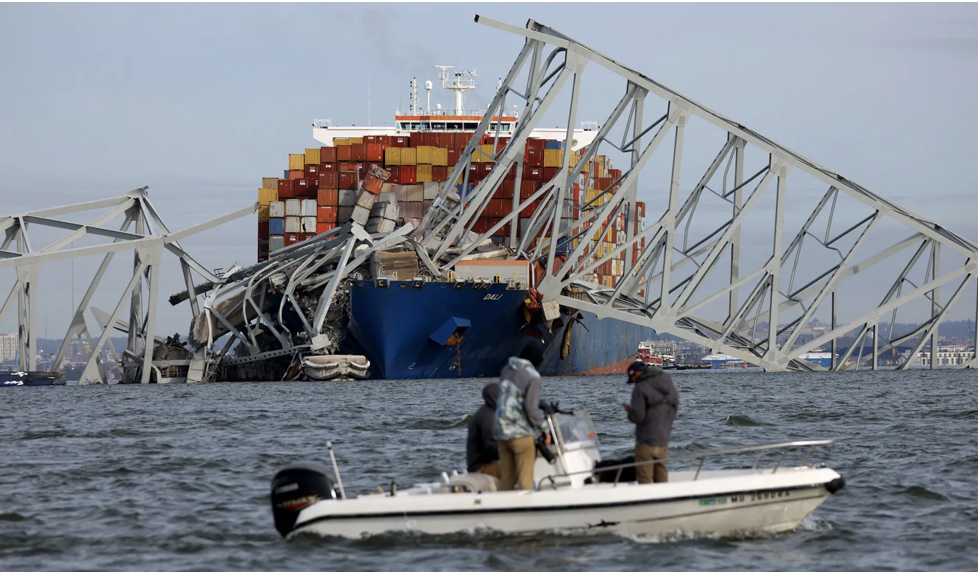By: Jon Fund – nationalreview.com – March 31, 2024
If progressives are willing to waive some environmental rules to speed up the reconstruction of the Key Bridge, why not do so more often?
It will indeed require heavy lifting. Unlike the Philadelphia freeway overpass, for example, which reopened to traffic twelve days after an accident there last year, the Key Bridge will have to be closed for weeks just to clear debris. Its replacement will need to occur amid ongoing ship traffic. When a ship took down part of a bridge across Tampa Bay in 1980, it took two years to file a new environmental-impact statement and begin construction and five years to rebuild it.
It is eye-opening to see progressives who have put up with such delays for decades suddenly so eager to sweep them away in the wake of the Baltimore disaster. “We can build quickly, if there is a necessity to do so, and there is certainly a necessity here,” says Representative John Garamendi of California, a senior Democrat on the House Transportation Committee. “The environmental issues are — should be — secondary or maybe not even considered as a new bridge is designed and built. And maybe we don’t even need a new design. There are bridges that are similar purpose to this one. We can take a design out of an older bridge that may have been built in the last decade with modern standards. So, let’s get on with it.” Well, so much for the bureaucracy that progressives normally defend so passionately.
President Biden may indeed waive some environmental-impact rules in order to speed up the construction of the new Baltimore bridge. But the real question is: Why isn’t this done more often with ordinary projects, which now drag on forever? Why can’t the U.S. have nice, plentiful infrastructure? President Biden’s 2021 Build Back Better infrastructure plan, passed at the behest of unions, won’t improve things in this regard. It provided, for example, $7.5 billion to build 500,000 public chargers for electric vehicles by 2030. As of last December, precisely zero had been built.
The Empire State Building took just one year and 45 days from cornerstone to opening in May 1931. Other countries still build things fast. New subway lines have been built in Paris and other European cities in recent years for about $400 million a mile. By contrast, the Second Avenue Subway extension in New York cost over $2 billion a mile — or five times as much.
Unlike many progressives, columnist Matthew Yglesias has challenged the high-cost, endless-litigation model of U.S. public-works projects: “Places like Singapore have nice infrastructure because they have pro-saving public policies and effective cost controls on construction projects,” he writes. “America has neither. As long as this is the state of affairs, we will not have top-notch infrastructure, no matter how much money the federal government throws at the problem.”
The problems Yglesias identifies plague every state. California’s high-speed-train project, which has been in the works for 20 years and counting, is over budget by $100 billion and will likely never be finished. Last month, the final environmental-impact statement for the rebuilding of Union Station in Washington, D.C., was released after nine years of work. And this is the prestige station that many lawmakers and bureaucrats frequently use, whose modernization, one would expect, is a priority!
What happens now? A three-year design phase followed by 13 years of construction. The estimated completion — by 2040 and at a cost of $9 billion — will mean that the Union Station project will have only taken a full quarter century to build from the time its blueprints were prepared.
Gary Leff, a transportation expert at the Mercatus Center, told me, “There are just too many veto points along the way, most of them created by the well-meaning National Environmental Policy Act.” He added that “if a NEPA analysis is deemed insufficient, that alone is reason for courts to start the process over.” One of the major causes of the problem is that unions like green laws such as NEPA: As development slows down, inflated labor contracts can last longer, and lawyers from all sides can reap huge fees. The result makes the U.S. the laughingstock of the world when it comes to construction.
Let’s hope the Key Bridge disaster focuses the country’s attention on the need for us to build things — something we used to excel in.
To see this article in its entirety and to subscribe to others like it, please choose to read more.
Source: Capitalism Can Solve Environmental Problems, Not Government Planning | National Review
 Listen Online
Listen Online Watch Online
Watch Online Find a Station in Your Area
Find a Station in Your Area








 Listen Now
Listen Now Watch Online
Watch Online
